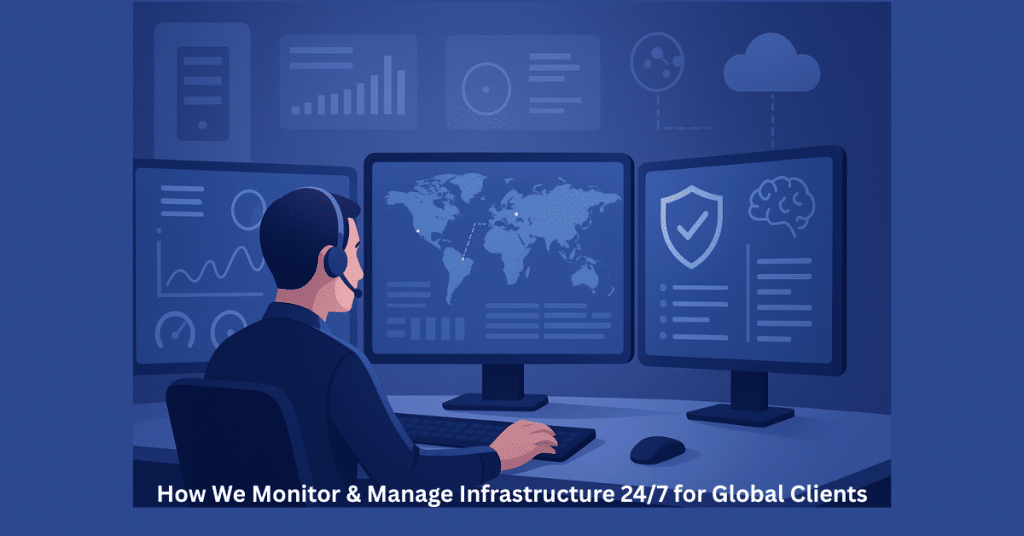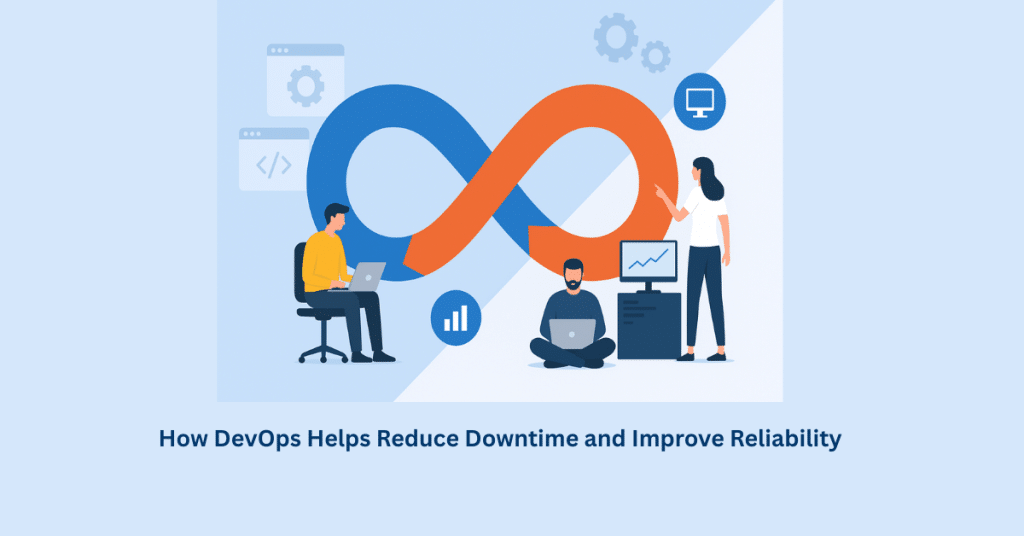The modern IT environment demands quicker software product development , delivery and improved IT operations team cooperation. While DevOps provides a precise approach, excellent process and resource management is necessary for the full automation of the software deployment pipeline.
Continuous monitoring, cloud resource allocation optimization, well-configured disaster recovery procedures, cost optimization, and other services are necessary to ensure high production velocity with DevOps. In the meantime, just 11% of participants in a recent enterprise survey could attest to having completely deployed DevOps.
The current IT landscape requires rapid development and delivery of software products as well as better collaboration between IT and operations teams. While DevOps offers a precise methodology for this, complete automation of the software deployment pipeline requires optimal management of processes and resources for its implementation.
Ensuring high production velocity with DevOps requires continuous monitoring, optimization of cloud resource allocation, well-configured disaster recovery methods, cost optimization and other services. Meanwhile, only 11% of respondents to a recent enterprise survey could confirm that they had fully implemented DevOps.
The following are the DevOps Managed Services
Continuously Infrastructure Maintenance
Continuous infrastructure support is necessary for DevOps deployment at several stages of the software development pipeline:
- It requires the three-tier hierarchy of IT organisational support: L1, the front-line staff member who directly answers customer inquiries; L2, the tier with more specialised skills and Site Reliability Engineers (SRE); and L3, a member of the application development team who is assigned to specific applications or services.
- The support staff uses third-party monitoring and analytics solutions to enable end-to-end visibility throughout the whole software development lifecycle.
- Short-term task closure and alert management are done via push gateways and alert managers.
- Machine learning technology is another tool that DevOps teams use for incident management to find problems and achieve SLAs.
Configuration, Reliability Monitoring, and Application Deployment
- The majority of the software development lifecycle is served by this step, which also includes performance measurements, environment and configuration setup, and architecture design. The following elements are under the authority of this managed service:
- Deployment support includes creating the necessary scripts and automating infrastructure management and deployment.
- On-demand supply of the required resources for deployment allows immediate deployment of authorised configuration changes to an operational software system.
- Cloud-provisioned configuration data files are used to build up the deployment architectures and environments.
- To manage permitted access to infrastructure services, security groups are used to create access levels and provide permissions.
- Detailed incident information and performance indicators To identify problems and proactively take corrective action, performance metrics and fine-grained incident data are tracked.
- Metadata is used to identify resources accurately and subsequently enhance performance for infrastructure and application services.
- Every step of the DevOps pipeline is continuously monitored to minimise system outages, enhance customer satisfaction, increase business credibility, and improve response times while optimising CPU and disk space usage.
Analysis and Resolution of Incidents
- Problem management procedures are given top priority by DevOps teams to facilitate greater transparency, ongoing enhancements, and quicker problem lifecycle resolution.
- L1 support teams handle incidents involving short-term outages or recurring problems without requiring any further escalation.
- Teams create user manuals and technical documentation outlining best practices and escalation policies based on frameworks like ITIL and prior incident resolutions.
- To facilitate continuous issue routing and resolution, there is very little difference between developers and administrators in DevOps incident management teams.
- Dashboards and statistics on application usage are made to offer an objective, final evaluation of the events.
- Root cause analysis is done after event rectification. To better resolve problems in the future, DevOps root cause analysis not only ensures blameless collaboration and communication but also finds the patterns, complexities, and behaviours that preceded events.
Disaster Recovery & Backup:
By frequently automating the Disaster Recovery (DR) process, DevOps makes it easier to prepare for potential regional failures such as natural catastrophes that result in blackouts of electricity. Additionally, daily automatic backups of the infrastructure and application are made for protection against host failure. DevOps teams use several techniques to implement DR and backups:
- disaster recovery and backup strategies are developed by continually reviewing the infrastructure, application, and resources while identifying any potential weaknesses.
- As a disaster recovery environment, the entire environment including the databases, systems, and application data is replicated to reduce the Recovery Time Objective (RTO) and Recovery Point Objective (RPO).
- Application-related data is copied to a secondary area and easily accessible with DevOps data archiving technologies. For this reason, scripts are checked into the code base so that the build process can reference them.
- By utilising the restoration metadata, archived objects can be restored manually or via a terminal without compromising the current resources.
Cost optimization and account monitoring
To determine which instances or resources are idle or overused, it is crucial to manage user accounts throughout the company and keep an eye on resource use. This facilitates the development of cost-effectiveness strategies and the appropriate resource allocation for the deployment of the DevOps pipeline:
- Use identity management to manage access to resources, creating a secure perimeter that guards against abuse, inactivity, or neglect while avoiding the risk of data theft or inflated expenses.
- To assess usage of cloud expenses and create more economical usage strategies, monthly reports on resource utilisation are generated.
- Monitoring expenditures and utilisation helps with reporting for billing analysis and analysing excessively or under-provisioned resources.
- All of the underutilised assets and instances are made available in a single view, and chances for resource rightsizing which allows for reduced spending are then highlighted. Measures of cloud utilisation are examined, and methods for ensuring cost optimization are proposed through recommendation algorithms.
Automation of Cloud Native DevOps
Businesses are adopting cloud-native DevOps automation to speed up time-to-market and produce exceptional applications more rapidly. The following are some strategies an organisation may use to effectively implement DevOps automation in the cloud:
- Continuous Integration and Continuous Delivery (CI/CD) pipelines can be used to automate software development processes with a variety of third-party solutions. Automated processes handle tasks like patching, maintaining dependencies, allocating servers, and putting code into production, freeing up corporate resources to concentrate on developing software.
- A human or automated source code audit looks for style guideline violations, bugs, security flaws, and boilerplate errors by comparing the code to good code standards.
- Change templates can be used to more easily set up configurations for the automation of tedious and repeated processes.
- By using containerized microservices, application development can be accelerated and improved scalability made possible.
- Third-party tools for log collection and analysis can be used to monitor the health of applications and infrastructure.
Using DevOps Managed Services and moving data centres to the cloud are reliable methods to improve collaboration between IT operations and development teams. Better IT system administration, remote server monitoring and management, network monitoring, and automation of additional support services for improved software quality and scalability may all be achieved with a strong foundation in DevOps Managed Services. You may schedule a free devops consultation with us right now if you’re searching for results similar to this.



